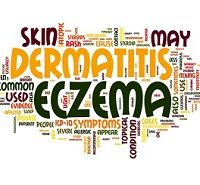Dermatologists Name Favorite Drugs in Pediatric Atopic Dermatitis
In a recent survey of pediatric dermatologists, cyclosporine (Neoral/ Novartis, SandIMMUNE/ Sandoz, others) was the most common choice of systemic agent to treat severe pediatric atopic dermatitis (AD), followed by methotrexate (Trexall, Teva, others).

In a recent survey of pediatric dermatologists, cyclosporine (Neoral/ Novartis, SandIMMUNE/ Sandoz, others) was the most common choice of systemic agent to treat severe pediatric atopic dermatitis (AD), followed by methotrexate (Trexall, Teva, others).
These findings from a sample of practitioners in North America differed from those of a similar survey in Europe, where an oral corticosteroid was most frequently chosen, followed by azathioprine (Imuran, Prometheus, others).
Results from the TREAT survey (TREatment of severe Atopic Dermatis in children Taskforce) for the US and Canada, a project of the Pediatric Dermatology Research Alliance (PeDRA), were reported online November 14 in the Journal of the American Academy of Dermatology.
The survey was distributed to select members of the Society for Pediatric Dermatology in the Fall of 2014, with 133 (45.9%) of 290 responding. Most of the respondents (86.5%) had used systemic treatment for severe pediatric AD.
Asked for their choice of a first-line agent, 45.2% indicated cyclosporine and 29.6% methotrexate. For second-line, methotrexate was indicated by 31.3% and mycophenolate mofetil (CellCept, Genentec) by 30.4%. Azathioprine was identified as a third-line agent by 33%, followed by mycophenolate mofetil by 24.3%.
Respondents indicated several factors had discouraged their use of systemic agents, including side-effect profiles (82.6%) and risk of long-term organ toxicity (81.7%). In addition, 65.2% indicated they had been discouraged in prescribing these agents by concerns expressed by patients and their families.
The investigators suggest that the range of responses in the TREAT survey on the decision to prescribe, choice of agent and the dosing of a systemic treatment for severe pediatric AD is a reflection, in part, on the paucity of randomized controlled trial (RCT) data.
"Additional RCTs are needed to determine the optimal dosing and duration of therapy for pediatric patients with AD and to compare the efficacy of different systemic agents," they conclude.
Related Coverage:
Atopic Dermatitis Long Term Therapy with Immunosuppressants Safe and Effective
New Trials Bolster Dupilumabs First-Line Treatment Potential for Atopic Dermatitis